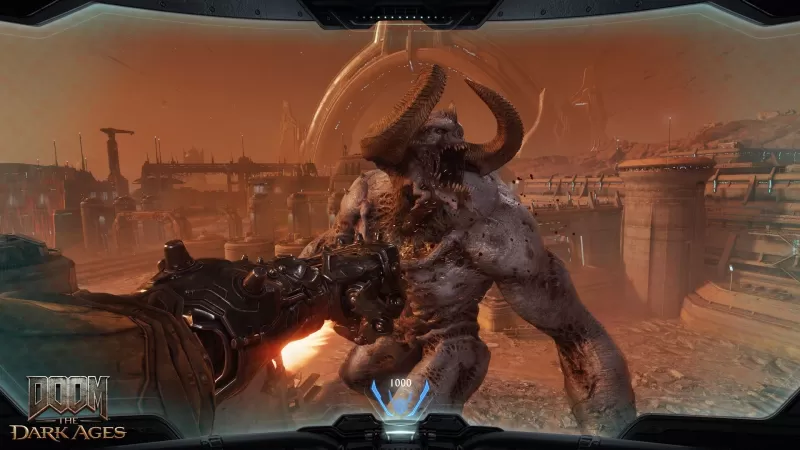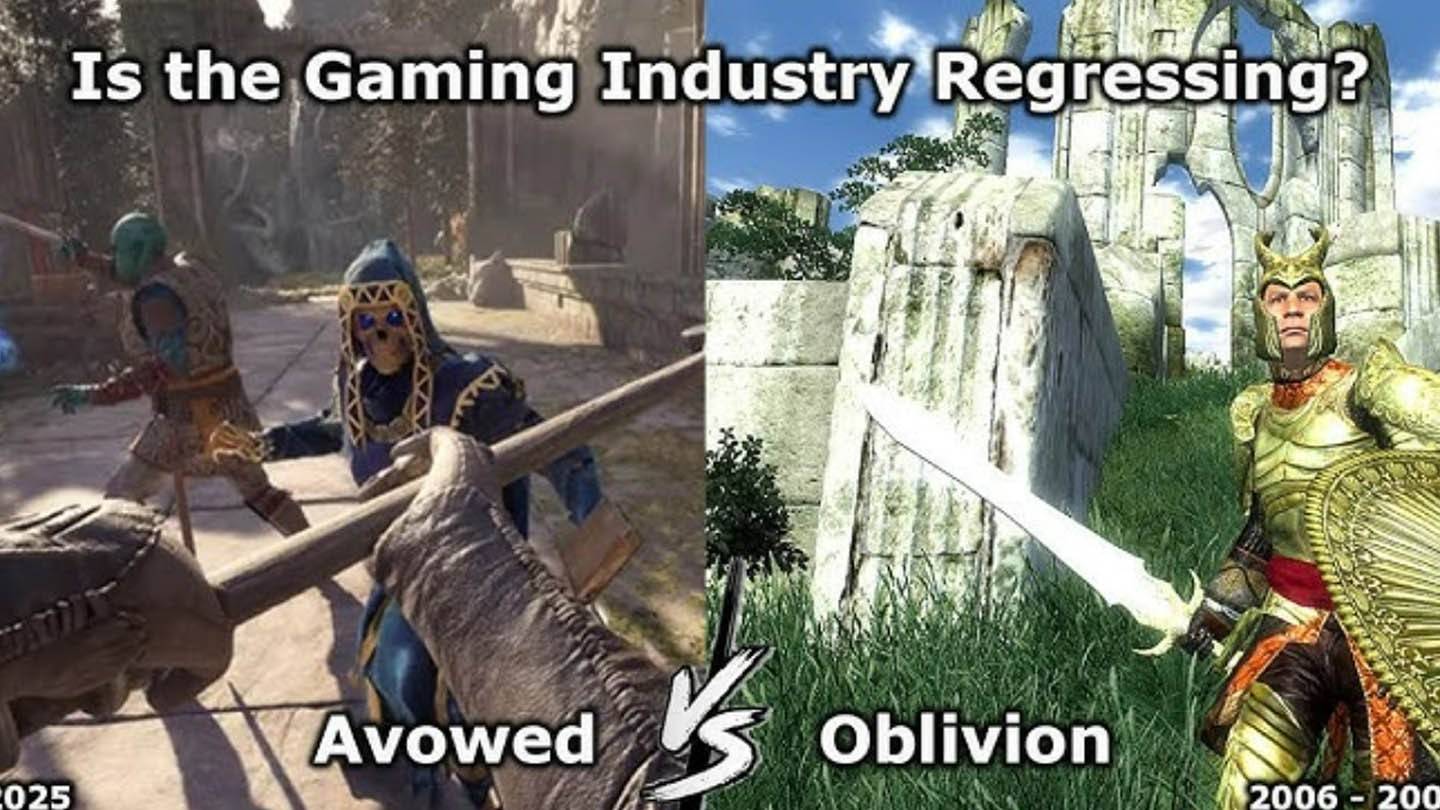During a recent hands-on demo of *Doom: The Dark Ages*, I found myself unexpectedly reminiscing about *Halo 3*. Midway through the experience, I was mounted on a cyborg dragon, unleashing machinegun fire at a demonic battle barge. After taking out the vessel's defensive turrets, I landed on the ship and charged through its lower decks, turning the crew into a bloody mess. Moments later, I burst through the hull on my dragon, continuing my crusade against Hell's machines.
Fans of *Halo 3* will recognize the similarity to Master Chief's assault on Covenant scarab tanks. While the Hornet helicopter is replaced by a holographic-winged dragon and the laser-firing mech by an occult flying boat, the essence of an aerial assault transitioning into a boarding action remains intact. Surprisingly, this wasn't the only *Halo*-like moment in the demo. Although *The Dark Ages*' combat is unmistakably *Doom*, the campaign's design feels reminiscent of late-2000s shooters, with elaborate cutscenes and novel gameplay mechanics.
 Over two and a half hours, I played through four levels of *Doom: The Dark Ages*. The first level, the campaign opener, echoed the tightly paced, well-designed levels of *Doom (2016)* and its sequel. The subsequent levels, however, introduced new elements: piloting a colossal mech, flying a dragon, and navigating a wide-open battlefield filled with secrets and powerful minibosses. This departure from *Doom*'s traditional mechanical purity felt akin to games like *Halo*, *Call of Duty*, and even old *James Bond* titles such as *Nightfire*, which rely on scripted setpieces and unique mechanics.
Over two and a half hours, I played through four levels of *Doom: The Dark Ages*. The first level, the campaign opener, echoed the tightly paced, well-designed levels of *Doom (2016)* and its sequel. The subsequent levels, however, introduced new elements: piloting a colossal mech, flying a dragon, and navigating a wide-open battlefield filled with secrets and powerful minibosses. This departure from *Doom*'s traditional mechanical purity felt akin to games like *Halo*, *Call of Duty*, and even old *James Bond* titles such as *Nightfire*, which rely on scripted setpieces and unique mechanics.
This direction for *Doom* is intriguing, especially considering the franchise's past. The cancelled *Doom 4* was set to mimic *Call of Duty* with its modern military aesthetic and focus on cinematic storytelling and scripted events. However, id Software abandoned this approach in favor of the more focused *Doom (2016)*. Yet, here we are in 2025 with *The Dark Ages* incorporating these elements.
The campaign's rapid pace is interspersed with new gameplay ideas reminiscent of *Call of Duty*'s most innovative sequences. My demo began with an elaborate cutscene reintroducing the realm of Argent D'Nur, the opulent Maykrs, and the Night Sentinels, the knightly comrades of the Doom Slayer. The cinematic approach to storytelling felt new and reminiscent of *Halo*. Throughout the levels, NPC Night Sentinels were scattered around, enhancing the sense of being part of a larger force, much like Master Chief among UNSC Marines.
While I appreciate the subtle storytelling of the previous *Doom* games, the cutscenes in *The Dark Ages* effectively set up missions without disrupting the game's intense flow. However, other elements introduced interruptions. Following the opening mission, I found myself in the cockpit of a Pacific Rim-like Atlan mech, battling demonic kaiju, and later soaring on a cybernetic dragon to take down battle barges. These scripted levels felt like a significant departure from *Doom*'s core gameplay, akin to *Call of Duty*'s AC-130 gunship or dogfighting missions in *Infinite Warfare*. The mech and dragon sequences, though exciting, felt less engaging and more like on-rails experiences compared to the dynamic, attention-demanding core combat of *Doom*.
 Many acclaimed FPS campaigns thrive on such variety, with *Half-Life 2* and *Titanfall 2* setting the standard and *Halo* enduring due to its mix of vehicular and on-foot sequences. Yet, I'm uncertain if this approach will suit *Doom*. The core combat in *The Dark Ages* is complex and demanding, making the mech and dragon sequences feel somewhat underwhelming and less interactive.
Many acclaimed FPS campaigns thrive on such variety, with *Half-Life 2* and *Titanfall 2* setting the standard and *Halo* enduring due to its mix of vehicular and on-foot sequences. Yet, I'm uncertain if this approach will suit *Doom*. The core combat in *The Dark Ages* is complex and demanding, making the mech and dragon sequences feel somewhat underwhelming and less interactive.
The final hour of my demo introduced a level called "Siege," which refocused on id's exceptional gunplay but opened up the typically tight level design into a vast battlefield. The objective, to destroy five Gore Portals, felt similar to *Call of Duty*'s multi-objective missions but also echoed *Halo*'s contrast between interior and exterior environments. This larger space required rethinking weapon ranges and tactics, enhancing the core shooter mechanics with new contexts. However, the expansive layout sometimes led to backtracking, which could disrupt the game's pace. Integrating the dragon into such levels, similar to *Halo*'s Banshee, could help maintain momentum and make the dragon feel more integral to the experience.
Despite the cancellation of *Doom 4*, elements of its design philosophy have resurfaced in *The Dark Ages*. The campaign includes boarding action setpieces, lush cinematics, a broader cast of characters, and significant lore reveals. The question remains: were these ideas always a bad fit for *Doom*, or was it their resemblance to *Call of Duty* that made them seem so? While skeptical about this shift, I'm also excited to see if id Software can successfully integrate these elements into the modern *Doom* formula.
At its core, *The Dark Ages* retains *Doom*'s signature on-foot, gun-in-hand combat, which remains the star of the show. Despite the new elements feeling somewhat less engaging, they are supported by the robust core gameplay. As I eagerly await the full release on May 15th, my curiosity is piqued: will *Doom: The Dark Ages* be a well-crafted late-2000s FPS campaign or a disjointed one?

 Related Articles
Related Articles
 May 27,2025
May 27,2025
![Mahjong Soul Partners with Fate/stay night [Heaven's Feel] in New Collaboration](https://imgs.jzvvv.com/uploads/95/680cf516b0a9a.webp)

 Latest Downloads
Latest Downloads
 Downlaod
Downlaod













